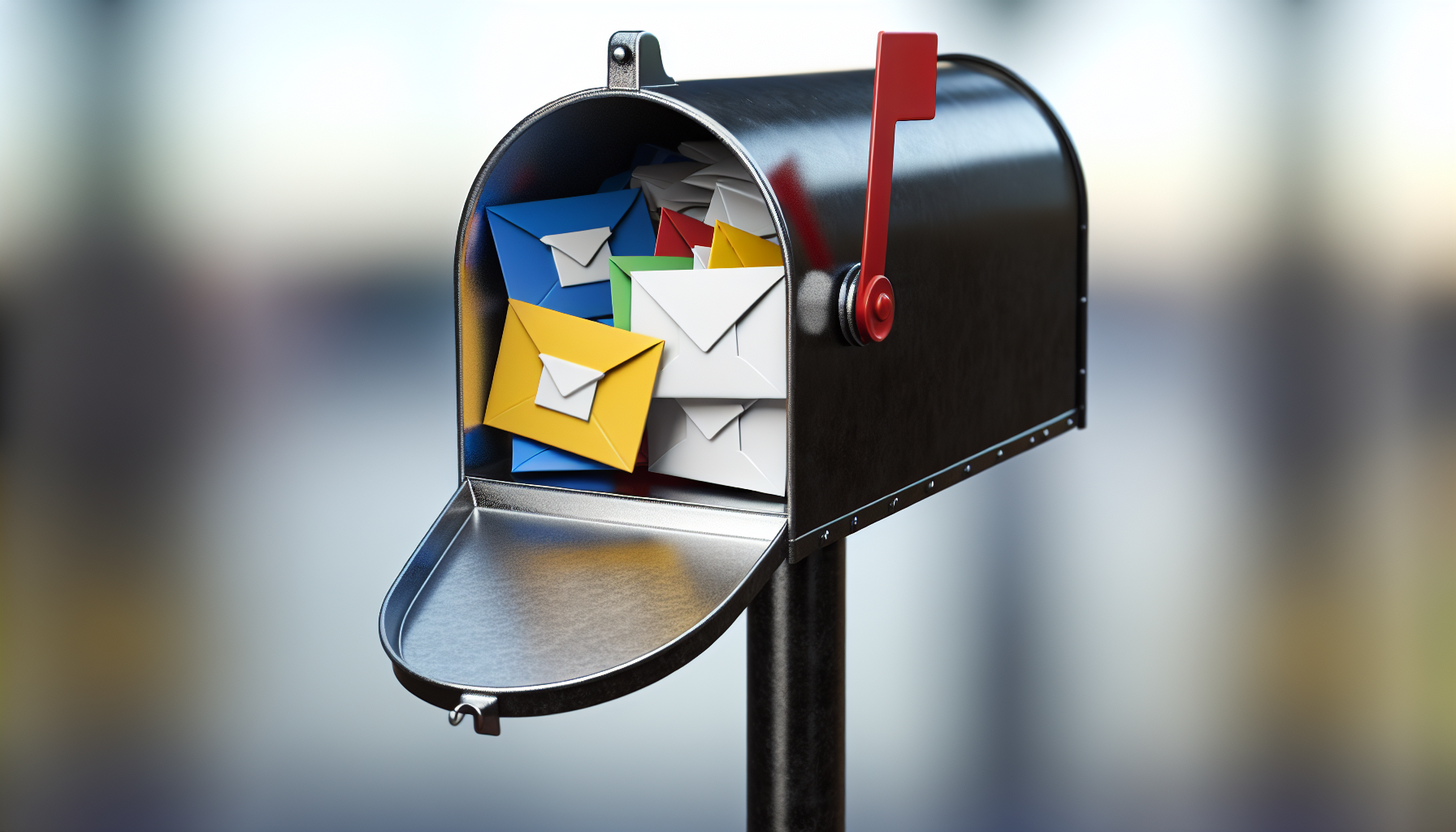
Boost Your Campaigns: 10 Proven Strategies for Improving Email Deliverability in 2024
Boost Your Campaigns: 10 Proven Strategies for Improving Email Deliverability in 2024
If you’re tired of emails vanishing into the void or battling bounce rates, you’re in the right place. This article cuts through the noise to directly address improving email deliverability. We’ve compiled 10 proven strategies to help you bypass spam filters and consistently reach your audience’s inbox. Ready to elevate your email game? Let’s dive in.
Key Takeaways
- Email deliverability is crucial for successful email marketing, going beyond ensuring emails just reach subscribers’ accounts to guaranteeing they land in the inbox for better engagement and ROI.
- Maintaining a strong sender reputation is vital, as it influences inbox placement and is affected by factors like sending frequency, list hygiene, and recipient engagement with emails.
- Consistently monitoring key metrics such as open rates, click-through rates, and bounce rates is important for understanding email campaign performance and making necessary adjustments to maintain or improve email deliverability.
Understanding Email Deliverability and Its Impact on Marketing Success
Email deliverability plays a crucial role in the world of email marketing, transcending beyond the mere arrival of your emails to subscribers’ accounts. It’s all about making sure that these marketing communications land squarely in their intended inbox, much like getting mail right inside your mailbox rather than being slipped unnoticed beneath a doormat. The former scenario facilitates ease of discovery and interaction—a pivotal difference separating basic email delivery from strategic email deliverability. By focusing on the latter, you ensure that your emails are positioned optimally for subscriber engagement at precisely the right moment.
Understanding why enhanced email deliverability is vital could save you from unnecessary distress. Imagine investing considerable time fine-tuning an exquisite email campaign only to have it relegated to the spam folder or not delivered altogether. Such situations can be highly exasperating! Suboptimal deliverability nullifies your hard work and detrimentally affects both user engagement rates and potential returns on investment (ROI). Conversely, when emails arrive accurately within someone’s inbox—where they belong—the likelihood of recipient interaction surges exponentially, propelling overall campaign effectiveness forward. In sum: the optimal functioning of any email marketing endeavor significantly depends upon reliable and efficient management of its deliverability aspect.
The Role of Sender Reputation in Email Deliverability
In the realm of email marketing, there’s a common understanding that your sender reputation is crucially important. This reputation has a significant impact on whether your emails make it to recipients’ inboxes or are cast off into the spam folder. Think of your sender reputation as an academic grade – excel here, and you’re more likely to secure a spot in someone’s inbox.
Once damaged, rebuilding a poor sender’s reputation can be quite challenging. If your domain gains notoriety for sending unwanted content, future messages may struggle to bypass filters leading directly into recipients’ primary folders—this detrimentally affects both delivery and campaign performance overall. When users file spam complaints against you, this signals major email carriers to classify your communications as undesired junk mail. Thus exacerbating deliverability issues. It starts a chain reaction that’s difficult to stop once set in motion, which underscores why having a solid sender reputation isn’t just advantageous but critical for successful email delivery efforts.
Factors Influencing Sender Score
Email deliverability hinges on a variety of factors that influence your sender score. This includes the reputation of both your sending IP address and domain, along with rates at which emails bounce back or are reported as spam. These components collectively shape your sender reputation—think of it as a complex puzzle where every piece is essential. Should one be out of place or compromised, it could affect the entirety.
Engagement stands out as one crucial segment within this intricate picture—it can have considerable influence over your sender score due to its direct link to sender reputation. The way recipients interact with emails by opening them and clicking on links holds significant weight in boosting email deliverability outcomes. Conversely, accumulating excessive spam complaints or maintaining lists replete with unknown users and inactive subscribers will weigh down your score—and may render delivering messages into their intended inboxes more difficult than ever before making diligent management efforts toward keeping subscriber engagement strong vitally important for healthy communication practices via email.
Strategies to Boost Sender Reputation
Enhancing your sender’s reputation is a continuous commitment, not just a one-off effort. The benefits of such dedication are clear: better email deliverability and the success of your email campaigns make it well worth the ongoing investment.
To improve your sender’s reputation, you can implement various tactics. One key strategy involves establishing a consistent sending schedule that suits your business goals, aiming to send emails at least once weekly. This level of regular communication does more than just keep your brand fresh in the minds of subscribers. It also significantly boosts your sender’s credibility.
By improving key aspects of email deliverability like keeping an updated subscriber list and creating captivating content, you’re setting up for enhanced results in terms both of sender status and overall efficacy within the realm of email marketing.
Sidestepping Spam Traps: Best Practices
Email marketing can be fraught with hidden dangers in the form of spam traps, which are essentially decoy email accounts created by Internet Service Providers (ISPs) to identify and catch spammers. Sending a message to one of these accounts can greatly damage your ability to deliver emails effectively as well as tarnish your sender reputation. To navigate this minefield successfully, you must recognize and steer clear of spam trigger words within your email campaigns.
To circumvent these digital pitfalls, adhere to several key best practices. Employing double opt-in methods ensures that only human users who truly want to engage with your content can register their emails on your list, thereby preventing bots from signing up using spam trap addresses. Including CAPTCHA technology during sign-up adds an extra layer of defense against automated subscriptions involving potential traps.
Relying on old data or buying email lists often brings the risk of encountering spam traps. Such sources frequently include them unintentionally or otherwise concealed among genuine contacts. It’s important not just to collect but also to diligently inspect subscriber details for accidental typos or inactive subscribers which may suggest they’re actually a trap – excising those findings immediately from the database is critical.
Adopting continuous routines for refreshing and purifying subscriber databases will serve as an invaluable safeguard against falling victim to any lurking Spam Traps among them, especially since cultivating a healthy list replete with active participants stands out as the most effective strategy against such threats in email marketing endeavors.
Crafting an Effective Subject Line
The headline of your email, similar to a newspaper’s main title, is the subject line. It catches your subscribers’ attention first and can influence whether they open the email or disregard it completely. A well-crafted subject line can notably enhance the chances that your emails are delivered successfully.
To prevent activating spam filters with your subject line, steer clear of words associated with pressure tactics, urgency inducement, or deception. Terms like ‘free’ have the potential to flag an email as spam depending on how they’re used within context. Excessive use of uppercase letters, superfluous punctuation marks, and providing inaccurate information should also be avoided.
Instead, focus on incorporating action-inducing verbs that prompt immediacy without appearing pushy, pose pertinent questions, or hint at an engaging narrative to pique interest among recipients. Increase personalization in your subject lines by including names or other specific details relevant to each recipient – this tactic has been shown to improve rates at which emails are opened significantly. Above all else, make sure that there is truth behind what you promise in the subject, alignment between expectations set by the subject line and the actual content inside ensures sustained high levels of deliverability for future communications via email.
Mastering Email Content to Avoid Spam Filters
When a subscriber first views your email in their inbox, that’s where the critical evaluation occurs. The content within your email is crucial as it determines if subsequent emails you send will be directed to their inbox or relegated to the spam folder. Honing the substance of your emails can greatly boost their chances of successful deliverability.
To ensure optimal performance of your emails, make sure they:
- Display correctly on various email clients
- Include both HTML and text-only versions for accessibility
- Steer clear from using complex media such as Flash or JavaScript which may activate spam filters
- Refrain from attaching files directly. Rather provide links to files hosted online.
- Consistently use alternative text for images so that the message remains comprehensible even when images are blocked.
Above all else, prioritize sending content that is deemed valuable and enjoyable by recipients. Crafting messages with clarity and a friendly tone not only makes them more readable but also increases engagement — factors that significantly contribute to improving your email deliverability.
Optimizing Email Infrastructure for Better Deliverability
Your email deliverability is significantly influenced by the infrastructure from which you send emails. It’s essential to have a dedicated IP address, robust email authentication methods, and an appropriate email service provider to establish a solid foundation for your emailing system.
Owning a dedicated IP allows you more direct control over your sender reputation and reduces risks associated with other users’ bad sending practices that could affect shared IPs. Acquiring a dedicated IP means more than just securing one. It requires setting up domain authentication using mechanisms such as the Sender Policy Framework (SPF), DomainKeys Identified Mail (DKIM), and Domain-based Message Authentication, Reporting & Conformance (DMARC). Warming up your new IP gradually by scaling up the volume of sent emails helps Internet Service Providers recognize the legitimacy of your communications. These crucial steps help uphold an excellent sender reputation necessary for optimum deliverability when employing a dedicated IP address.
The Importance of Email Authentication
Authentication for emails acts as a verification system, confirming the origin of an email to secure its entry into your subscribers’ inboxes. It is vital for both maintaining a robust sender reputation and ensuring consistent inbox delivery.
Protocols such as SPF (Sender Policy Framework), DKIM (DomainKeys Identified Mail), and DMARC are critical components of successful inbox placement. Here’s what each protocol does:
- SPF authorizes specific mail servers to send emails on behalf of your domain.
- DKIM validates that the content of an email remains unaltered during transmission.
- DMARC leverages both SPF and DKIM protocols to verify authenticity, providing domain owners with control over how their domains are used and guiding recipient servers in processing non-compliant messages.
By incorporating these authentication techniques, you dramatically enhance the likelihood that your communications will avoid being mislabeled as spam and instead be delivered directly to subscriber inboxes.
Choosing the Right Email Service Provider
Choosing the right email service provider (ESP) is like choosing the right vehicle for a road trip – it can significantly impact your journey’s success. Selecting an ESP with a deep technical understanding of email deliverability is vital to maintaining a positive sender reputation. In this digital age, partnering with a reliable internet service provider can also play a crucial role in ensuring seamless communication.
Your ESP’s reputation can influence the deliverability success of major Internet Service Providers (ISPs), especially if you’re using shared IP addresses. Performance in email deliverability can vary among ESPs due to differences in the quality and reputation of their mail servers. Thus, it’s crucial to employ an ESP that can adeptly manage IP warmup processes and has a strong reputation for successful email delivery.
Remember, your ESP is your partner in your email marketing journey, so choose wisely.
Maintaining a Clean and Engaged Email List
A clean and engaged email list is like a well-tended garden – it requires regular maintenance but yields plentiful fruits. Maintaining a clean email list is crucial for improving your email deliverability.
To ensure that you have a high-quality email list and maintain a good sender reputation, follow these best practices:
- Use a double opt-in process to verify new subscribers’ email addresses and ensure they genuinely wish to receive your emails.
- Regularly cleanse your email list by removing expired or bounced addresses and inactive recipients.
- Promote easy and transparent unsubscribe practices, allowing subscribers to opt out of future communications easily.
By implementing these practices, you can minimize the chance of receiving spam complaints and protect your sender reputation.
Remember, an engaged list is a happy list, and a happy list leads to successful email campaigns.
Establishing a Consistent Sending Schedule
To achieve a higher level of email deliverability, it’s essential to adopt a regular emailing schedule, similar to how one might adhere to fixed meal times. This regularity helps in fostering anticipation for your messages and prevents them from being overlooked. Adhering to such a timetable plays an integral role in bolstering your sender reputation and optimizing the chances that your emails reach their intended audience.
For effective email marketing, it is vital not only to remain consistent with the frequency of communications but also to follow a set schedule. By doing so, you ensure continuous engagement while keeping your brand fresh in the minds of recipients. This consistency contributes substantially towards cultivating a reputable sender identity. It’s equally important to monitor and regulate your daily email sending volume as excessive quantities can lead to account suspensions or worse, compromises on establishing trustworthiness as an email communicator.
Maintaining constancy is paramount within the realm of email marketing – it forms the foundation upon which successful campaigns are built and sustained over time.
Measuring and Monitoring: Key Metrics for Email Deliverability
Keeping track of essential indicators is akin to monitoring the speedometer in your vehicle – it’s crucial for gauging performance and identifying areas that may need improvement. Metrics such as open rates, click-through rates, and bounce rates are particularly informative when evaluating the effectiveness of your email campaigns and overall deliverability.
For a precise assessment of how well your emails reach their targets, metrics like inbox placement rate and CTR are indispensable. With an average deliverability rate hovering around 83.1% across various email service providers tested, there’s clear evidence that a notable proportion of emails fail to arrive at their desired inboxes. A bounce rate exceeding 2% per hundred emails sent signals an urgent need to refine practices to preserve the health of your email deliverability. A diligent review of these metrics is vital in measuring the triumphs or shortcomings within your email initiatives while paving the way for improvements that can enhance success ratios regarding delivery efficiency.
Innovative Techniques to Re-engage Inactive Subscribers
Revitalizing the connection with inactive subscribers is akin to reigniting a past friendship – it demands dedication but can be immensely fulfilling. Employing creative strategies such as tailored re-engagement emails, exclusive deals, and digital competitions can breathe new life into your relationship with these subscribers.
When you notice a subscriber’s activity waning, consider sending targeted re-engagement emails promptly. Enhance the personal touch in these attempts by providing offers or content updates that are relevant based on their previous interactions with your brand. Encourage higher levels of engagement through hosting online contests or prize drawings.
Keep in mind that every subscriber once showed an interest in what you offer. The correct strategy has the power to revive this interest and transform those inactive subscribers back into active and engaged users of your service or product.
Navigating Legal Requirements and Subscriber Preferences
Email marketers must navigate a maze of legal requirements and subscriber preferences. Complying with laws such as the CAN-SPAM Act and General Data Protection Regulation (GDPR) is not just a legal obligation, but also a crucial component of maintaining email deliverability and respecting subscriber preferences.
These laws require consent, truthful information, and clear advertisement disclosures. It’s essential to obtain recipient consent that is specific and informed. Marketers must provide an easy method for subscribers to withdraw their consent and opt out of future communications. Organizations are responsible for ensuring their email practices are compliant with legal standards, even when using third-party services.
Respecting these legal requirements and subscriber preferences is not just about avoiding penalties – it’s about building trust with your subscribers.
Utilizing A/B Testing to Optimize Deliverability
Email A/B testing serves as a methodical approach to enhance your email campaigns, similar to conducting experiments in science. It allows you to identify effective strategies and recognize aspects of your emails that require improvement. Through this process, the aim is to maximize the success rates of your email deliverability.
The practice entails distributing two variants of an email message across separate segments from your mailing list. By evaluating which version achieves higher engagement rates—tracked through open and click metrics—you can ascertain optimal components including subject lines, sender information, body content, visual elements, and call-to-action prompts tailored for your intended audience. To accurately measure the influence of each component on performance outcomes. Only one variable must be altered per test iteration.
To solidify the reliability of these A/B tests’ findings, continue monitoring over an extended time frame before concluding., Subsequently, adaptions should be made based on acquired data to improve ongoing efforts toward more successful email delivery statistics.
Summary
In the realm of email marketing, deliverability is king. From understanding the role of email deliverability and sender reputation to crafting compelling subject lines and mastering email content, each piece of the puzzle plays a crucial role in ensuring your emails land in the inbox, not the spam folder. Implementing email authentication, maintaining a clean and engaged email list, and monitoring key metrics can significantly improve your email deliverability. And remember, it’s not just about sending emails; it’s about engaging your subscribers, respecting their preferences, and continuously striving to improve. So gear up, implement these strategies, and watch your email marketing success skyrocket!
Frequently Asked Questions
What can improve email deliverability?
Enhancing email deliverability can be achieved through authenticating your email domain, ensuring accurate IP allocation, refining the opt-in procedure, and maintaining tidy lists. Adopt a regular sending schedule and implement a double opt-in or confirmed opt-in to boost deliverability.
What is the difference between email deliverability and email delivery?
Understanding the distinction between email delivery and email deliverability is crucial for enhancing your email marketing campaigns. Email delivery means that an email has successfully arrived at the subscriber’s account, whereas email deliverability pertains to whether that mail appears in the inbox itself—positioned for opening and interaction by the recipient.
Does DKIM improve deliverability?
Indeed, DKIM enhances deliverability by mitigating the chance that your emails will be identified as spam or phishing schemes. It boosts the probability that legitimate emails will successfully arrive at recipients’ inboxes.
How do you maintain high email delivery?
To preserve a robust sender reputation and achieve successful email delivery, it’s critical to authenticate your domain using SPF, DKIM, and DMARC protocols. Gradually increasing activity on your IP address—a process known as warming up—is also essential. Keep track of your sender reputation by monitoring blacklists diligently. Implement a double opt-in mechanism for subscriptions, provide a straightforward unsubscribe option, avoid terminology that triggers spam filters, and steer clear of purchasing email lists.
Adhering to these methods is crucial in maintaining optimal levels of high email delivery rate consistency.
How can I improve my Gmail deliverability?
Enhancing your email deliverability on Gmail can be achieved by authenticating your domain using SPF, DKIM, and DMARC protocols. It’s also important to keep your email list tidy and refrain from incorporating words in your emails that might trigger spam filters.
Adhering to these key best practices will bolster the reliability of your email delivery, making certain that your communications are successfully delivered to the intended recipients’ inboxes.
Are you interested in finding out more? Browse the rest of our blog for other marketing tips. If you’re ready to create your first email, survey, sign-up form, or landing page then register for a free trial to get the tools you need to build powerful marketing campaigns!
© 2024, Vertical Response. All rights reserved.








